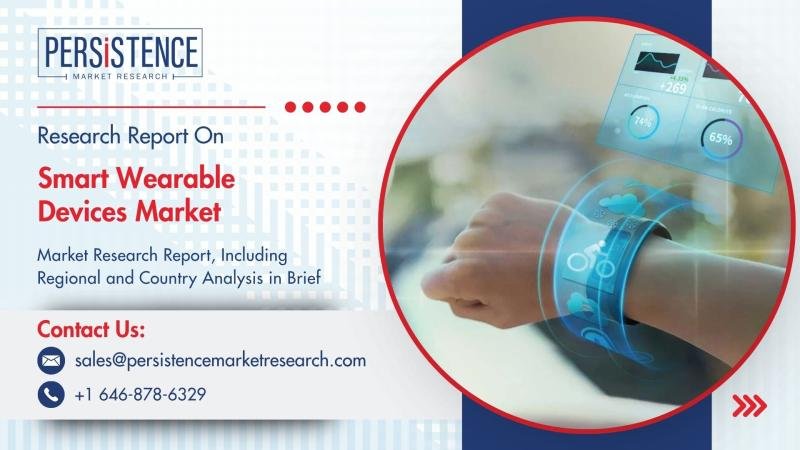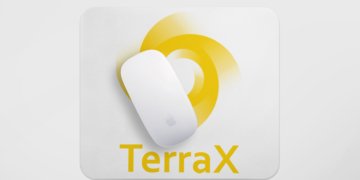✅Overview of the Smart Wearable Devices Market
The smart wearable devices market is experiencing rapid evolution, driven by the fusion of advanced technology with everyday consumer needs. According to the latest study by Persistence Market Research, the market is projected to grow at an impressive compound annual growth rate (CAGR) of 22.5% from 2025 to 2032. These devices, ranging from fitness trackers and smartwatches to smart glasses and smart clothing, have transformed from niche gadgets into mainstream consumer electronics. Their growing adoption can be attributed to their convenience, multifunctional applications, and real-time data insights. As users increasingly focus on health, lifestyle tracking, and seamless connectivity, smart wearables have found a firm foothold across various age groups and regions.
The health and fitness segment remains the dominant application area for smart wearable devices. Wearables equipped with heart rate sensors, sleep monitors, and calorie trackers are increasingly used not just by athletes but also by regular consumers aiming to lead healthier lifestyles. On the geographical front, North America leads the global market due to early technology adoption, the presence of key market players, and a tech-savvy population. The region’s high healthcare awareness and disposable income further support its dominance. However, Asia-Pacific is emerging as a rapidly growing region, especially with countries like China, India, and Japan investing in digital health initiatives and embracing wearable tech.
Get a Sample PDF Brochure of the Report (Use Corporate Email ID for a Quick Response): https://www.persistencemarketresearch.com/samples/21913
✅Key Market Insights
➤ The smart wearable devices market is set to expand at a CAGR of 22.5% from 2025 to 2032.
➤ Health and fitness tracking remains the most prominent application segment globally.
➤ North America currently dominates the market, while Asia-Pacific shows the fastest growth rate.
➤ Technological innovations such as AI integration and biometric sensors are driving product development.
➤ The proliferation of IoT and 5G is enhancing real-time functionality and connectivity of smart wearables.
✅Why are smart wearable devices becoming increasingly popular?
Smart wearable devices are gaining popularity due to their ability to offer real-time health monitoring, enhance lifestyle convenience, and provide on-the-go access to data and communication. As consumers seek proactive health management tools, wearables allow users to track fitness, sleep, heart rate, and even stress levels. Moreover, their integration with mobile apps and cloud-based analytics enables personalized recommendations and seamless digital experiences. The convenience of voice assistants, app notifications, and contactless payments further adds to their appeal. This growing utility, coupled with stylish designs and affordability, has cemented wearables as indispensable tech in everyday life.
✅Market Dynamics
Market Drivers: One of the primary drivers of the smart wearable devices market is the increasing awareness around health and wellness. With the rising prevalence of lifestyle diseases, consumers are more inclined toward devices that can help monitor their physiological metrics. The rise in mobile and internet penetration, combined with the spread of digital health solutions, has further facilitated the adoption of wearables. Additionally, the integration of features such as GPS tracking, Bluetooth, and cellular connectivity into wearable devices enhances their functionality and appeal.
Market Restraining Factor: Despite strong growth, the market faces challenges such as data privacy concerns and high costs associated with premium wearable products. Many users are skeptical about sharing health data due to fears of breaches or misuse. Moreover, limited battery life and the need for frequent charging also reduce user convenience. Interoperability issues with operating systems and apps can hinder seamless usage, especially in non-tech-savvy demographics.
Key Market Opportunity: A significant opportunity lies in the integration of AI and machine learning algorithms to improve predictive health insights and automate routine tasks. The expansion of wearable applications into mental health, chronic disease management, and elderly care also presents lucrative opportunities. Moreover, the development of hybrid wearables-offering both fashion and function-could open new consumer segments, particularly in emerging economies.
✅Market Segmentation
The smart wearable devices market is segmented based on product type, application, end-user, and connectivity. Among product types, smartwatches dominate, owing to their multifunctional utility, stylish aesthetics, and increasing affordability. These devices not only provide health insights but also serve as extensions of smartphones, offering features like messaging, navigation, and music control. Fitness bands are popular among budget-conscious users and fitness enthusiasts, while smart clothing and eyewear are gaining traction in niche athletic and augmented reality applications.
In terms of application, the health and fitness sector remains the largest, supported by rising concerns over physical well-being and growing interest in personal health tracking. The enterprise segment, including industries like logistics, healthcare, and defense, is also emerging as a key growth avenue, where wearables improve workforce productivity and safety. Wearables are increasingly being adopted in consumer electronics and gaming, providing immersive experiences through haptics and AR/VR. Connectivity-wise, Bluetooth-enabled devices lead the market, but 5G and Wi-Fi-integrated wearables are witnessing rapid uptake due to better speed and data transfer capabilities.
✅Regional Insights
North America continues to lead the global smart wearable devices market, thanks to high consumer awareness, advanced digital infrastructure, and early product adoption. The region is also home to several major industry players who drive continuous innovation. Strong healthcare spending and increasing chronic disease prevalence encourage the use of wearables in health monitoring and remote care.
In contrast, Asia-Pacific is emerging as the fastest-growing region due to the growing middle-class population, urbanization, and government initiatives supporting digital health. Countries like China, South Korea, and India are witnessing an uptick in wearable adoption across both urban and rural areas, driven by increased smartphone penetration and growing interest in fitness and wellness.
✅Company Insights
✦ Apple Inc.
✦ Samsung Electronics Co. Ltd.
✦ Xiaomi Corporation
✦ Fitbit (now part of Google LLC)
✦ Huawei Technologies Co., Ltd.
✦ Garmin Ltd.
✦ Fossil Group, Inc.
✦ Sony Corporation
✦ Amazfit (Huami Corporation)
✦ Noise
✦ Withings
For Customized Insights on Segments, Regions, or Competitors, Request Personalized Purchase Options @ https://www.persistencemarketresearch.com/request-customization/21913
✅Key Industry Developments
In 2024, Apple Inc. announced new health features in the Apple Watch Series 9, including temperature sensing and enhanced ovulation tracking, targeting women’s health monitoring. The company also expanded partnerships with healthcare providers to integrate wearable data into medical records.
Samsung unveiled the Galaxy Ring, a lightweight wearable designed for sleep tracking and health monitoring, marking the brand’s expansion beyond wrist-based devices. This launch is expected to redefine the smart ring segment and intensify competition in compact wearables.
✅Innovation and Future Trends
Innovation in smart wearable devices is increasingly focused on advanced health diagnostics, such as blood oxygen saturation monitoring, ECG tracking, and even glucose monitoring. AI-driven insights are becoming more sophisticated, enabling real-time alerts and personalized health recommendations. Smart textiles with embedded sensors are also being developed for military, athletic, and medical use cases, offering a seamless user experience without the bulk of traditional wearables.
Looking ahead, the market is expected to move towards multi-modal wearables, capable of integrating health, entertainment, and communication functionalities in one device. Flexible displays, solar-powered charging, and seamless integration with virtual assistants like Alexa and Siri will likely shape the next generation of smart wearables. The rise of wearable tech ecosystems, connecting multiple devices across a single platform, will further enhance usability and adoption.
✅Explore the Latest Trending “Exclusive Article” @
• https://apnewswire.hashnode.dev/smart-parcel-locker-market-key-players-and-competitive-landscape
• https://hackmd.io/@2vhr6YqxSr6ACDaTSHbDOA/H1jkPjH7ex
• https://www.behance.net/gallery/227840581/Smart-Parcel-Locker-Market
• https://industrynewswire.substack.com/p/smart-parcel-locker-market-segmentation
✅Contact Us:
Persistence Market Research
G04 Golden Mile House, Clayponds Lane
Brentford, London, TW8 0GU UK
USA Phone: +1 646-878-6329
UK Phone: +44 203-837-5656
Email: sales@persistencemarketresearch.com
Web: https://www.persistencemarketresearch.com
✅About Persistence Market Research:
At Persistence Market Research, we specialize in creating research studies that serve as strategic tools for driving business growth. Established as a proprietary firm in 2012, we have evolved into a registered company in England and Wales in 2023 under the name Persistence Research & Consultancy Services Ltd. With a solid foundation, we have completed over 3600 custom and syndicate market research projects, and delivered more than 2700 projects for other leading market research companies’ clients.
Our approach combines traditional market research methods with modern tools to offer comprehensive research solutions. With a decade of experience, we pride ourselves on deriving actionable insights from data to help businesses stay ahead of the competition. Our client base spans multinational corporations, leading consulting firms, investment funds, and government departments. A significant portion of our sales comes from repeat clients, a testament to the value and trust we’ve built over the years.
This release was published on openPR.

















